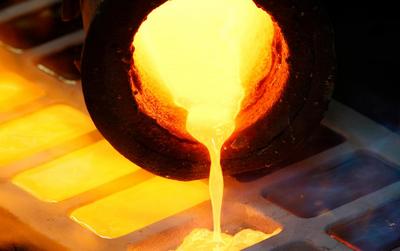Enthalpy of Fusion

Content:
Fusion is the process of transforming a body from a solid to a liquid state under the influence of temperature. A classic example of fusion from life is the melting of ice, its transformation into the water, or the transformation of a solid piece of tin into a liquid solder under the action of a soldering iron. The transfer to a body of a certain amount of heat can change its state of aggregation; this amazing property of solids to turn into liquids under the influence of temperature is of great importance for science and technology. Scientists (as well as technicians, engineers) need to know at what temperatures certain metals melt (and sometimes not only metals), and for this, such a concept as “enthalpy of fusion” has entered into physics.
Why Does a Solid Become Fluid?
Let’s take a look at how the melting process occurs at the atomic-molecular level. All atoms and molecules are clearly and orderly in the nodes of the crystal lattice in any solid body. Due to this, a solid body is solid.
Yet what happens if we start to heat this hypothetical solid body – atoms and molecules will increase their kinetic energy under the influence of temperature, and upon reaching certain critical values, they begin to leave the crystal lattice and break out of it. The solid itself will begin to decay, turning into a kind of liquid substance – this is how melting occurs.
In this case, the melting process does not occur abruptly, but gradually. It is also worth noting that melting refers to endothermic processes, that is, processes in which heat is absorbed.
The process opposite to melting is called crystallization – this is when a body from a liquid state, on the contrary, turns into a solid. If you leave water in the freezer, it will turn into ice after some time – this is the most typical example of crystallization from real life.
Definition And Formula
Enthalpy of fusion is a physical quantity equal to the amount of heat (in joules) that must be transferred to a solid body weighing 1 kg to completely transfer it to a liquid state. Enthalpy of fusion is denoted by the Greek letter “lambda” – λ.
Enthalpy of fusion formula:
λ = Q / m
Where m is the mass of the melting substance, and Q is the amount of heat transferred to the substance during melting.
Knowing the value of the specific enthalpy of fusion, we can determine how much heat must be transferred for a body with a particular mass for its complete melting:
Q = λ * m
For different substances, the specific enthalpy of fusion was determined experimentally.
References and Further Reading
- Hoffer, J. K.; Gardner, W. R.; Waterfield, C. G.; Phillips, N. E. (April 1976). “Thermodynamic properties of 4He. II. The bcc phase and the P-T and VT phase diagrams below 2 K”. Journal of Low Temperature Physics. 23 (1): 63–102. Bibcode:1976JLTP…23…63H. doi:10.1007/BF00117245.
- Ibrahim Dincer and Marc A. Rosen. Thermal Energy Storage: Systems and Applications, page 155
- Measurement and Prediction of Solubility of Paracetamol in Water-Isopropanol Solution. Part 2. Prediction H. Hojjati and S. Rohani Org. Process Res. Dev.; 2006; 10(6) pp 1110–1118; (Article) doi:10.1021/op060074g

Author: Pavlo Chaika, Editor-in-Chief of the journal Poznavayka
When writing this article, I tried to make it as interesting and useful as possible. I would be grateful for any feedback and constructive criticism in the form of comments to the article. You can also write your wish/question/suggestion to my mail pavelchaika1983@gmail.com or to Facebook.

